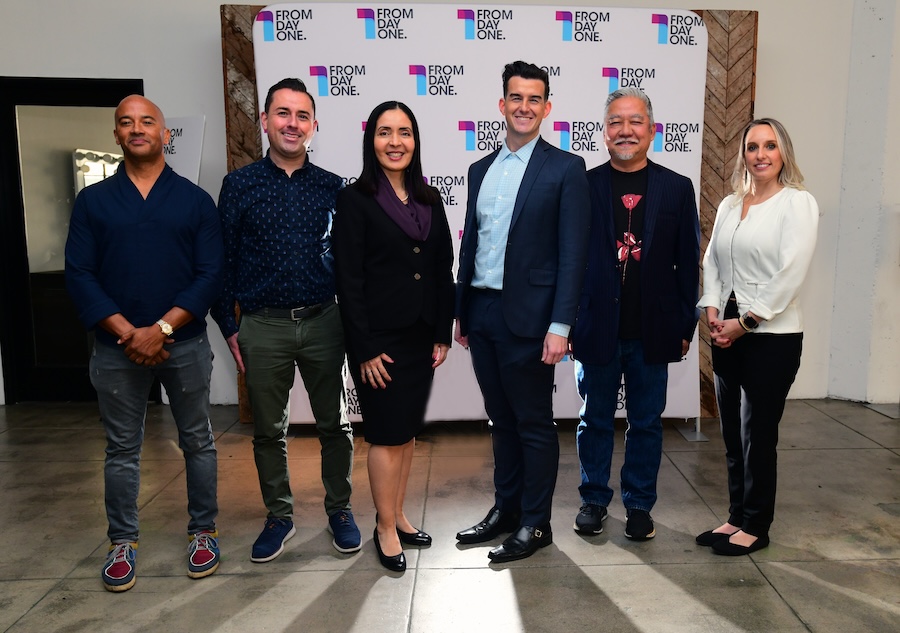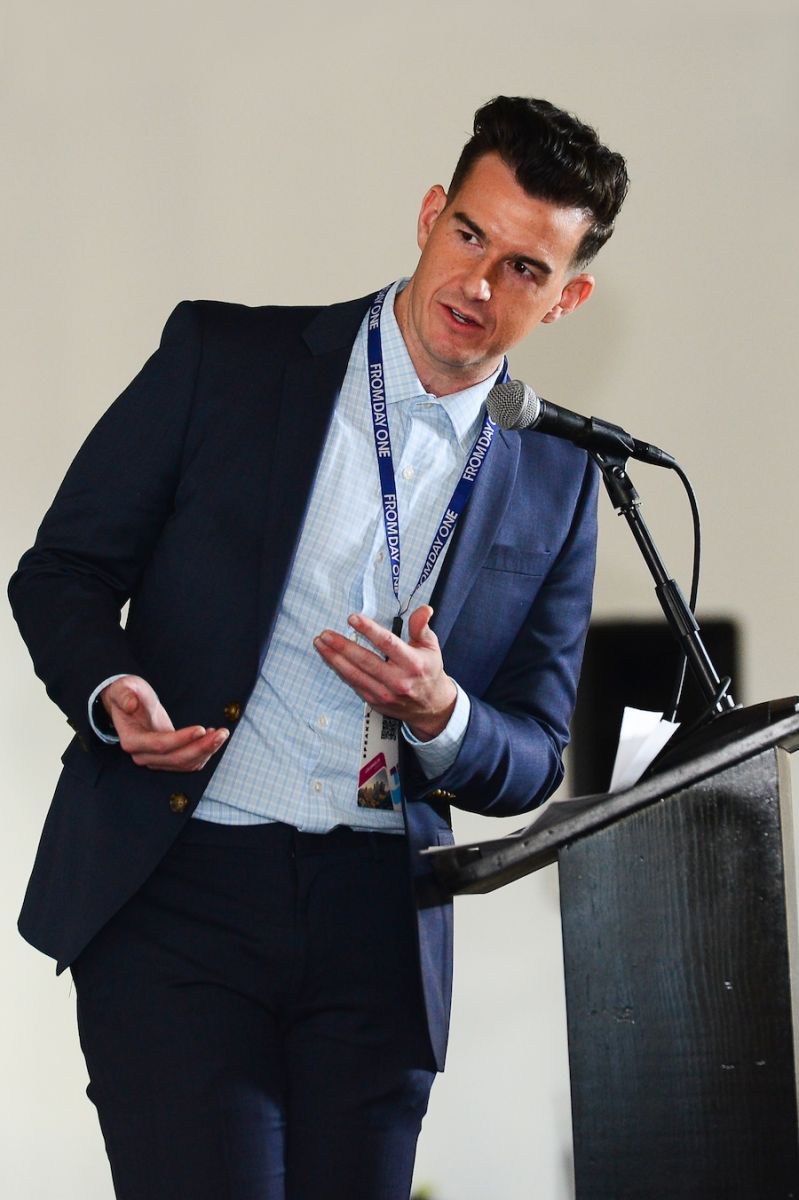To Attract More Talent, Build a Bigger Tent


Get a degree, get the job. That’s been the way of finding careers for a long time. But companies are taking a hard look at how they handle talent acquisition, and they’re realizing it’s time to rethink their time-worn approach. One way is to remove barriers for people who might lack traditional credentials, but have the potential to be a good fit.
“We take a skills-based approach,” said Eric Ueno, SVP of HR for Hot Topic. “We found that bachelor's degrees were a barrier for a lot of prospective candidates. So, we look at the skills more than the education itself.”
Ueno joined four other panelists on the topic of rethinking talent acquisition at From Day One’s Los Angeles conference.
When it comes to attracting the type of talent that would fit well with the Hot Topic brand, Ueno says that every touchpoint reflects the environment the employee would be working in. From picking the right URL to taglines that resonate with the core audience.
“The other thing that we do is take a look at innovation in terms of, how do we get people into our hiring process as quickly and easily as possible?” he said. QR codes or text to apply signs at their stores make it easy for potential talent to apply. Then continuing with useful tech, “We have a chatbot that we use that interacts with all of our potential candidates and helps them search out where the job opportunities are.” With an applicant pool of 94,000 qualified candidates in 2022 alone, the chatbot has been huge in terms of productivity.
Cast a Wider Net
Many industries are hurting for talent, which is why one of the panelists suggested taking a more nontraditional approach.
“Look at all the untapped talent in your community that’s being blocked out because of your traditional mindset,” said Rita Stall, senior director of digital operations at Tech Elevator.
Actively reaching out to communities of people that companies tend to ignore can grow your business in ways you never thought possible, says Stall.
“The neurodiverse, the veterans, the career transitioners, the recently incarcerated folks—there’s lots of workforce programs across the United States, they’re in every state in every community that have tons and tons of really good talent,” she said.

When looking to fill roles, don’t underestimate the value of employees already working at your business. They already know company culture, and even though their current job may be in a different department, the question is, do they have the skills that matter? And can they be trained to do the rest? Because they could be a better fit and a less expensive find.
“Certification programs are really a great way to take those learning and development dollars, your in-house dollars, and find the talent within your organization,” Stall added. The average software developer costs $60,000 to find, onboard, and train. Whereas instead, you can invest inside of that talent.”
Engage Your Employees
It’s one thing to hire an employee, and it’s quite another to retain them. Brian Padilla, VP, HR business partner & production leader for Lionsgate, says they have a unique challenge because the different roles are defined with specific functions. So how can they help their employees feel engaged and valued?
“Are they receiving the development that they need? Are they fulfilled? Are they happy in their role?” he said. They may have the employee take on a stretch assignment, perhaps take second lead on a particular project, or shadow another person. It gives them upward movement, he says. Or they can start them on their internal coaching program, mentorship program, or certification program.
There are certain skills that can be taught, and others that are hard to find. So focusing on what matters keeps the best talent where they want to be.
Traditionally, people would look for work pretty much anywhere. These days, employees want a company and a work environment that aligns with their values. That’s why it’s important to have them front and center.
“The employer brand is huge,” he said. Candidates want to get a sense of what the company is all about. “What are the values? Do you live by them? What is your DEI (diversity, equity, and inclusion) philosophy?”
Focus on Flexibility

The nontraditional approach to talent requires flexibility. That means thinking outside the box. Challenging the old way of doing things. Opening new doors.
“I think we’re really talking about being agile, in terms of the methods used to onboard and also the way that you look at the people that you’re bringing in. Agility is a big factor,” said Bertha Haro, executive director for NPower, California.
But depending on your industry, focus on that competitive advantage. Outsource the skills that are broad and easy to find. “But when you’re talking about industry competitive advantage, then you want to keep it in-house, and you want to have a different pathway toward building that talent capacity,” Haro said.
Enhance the positions you already have, she added. “Across the board, all of us, we may be in roles that existed 20 or 40 years ago, but the way we operate is not the same as the way they did.”
Grow Business Through Purpose
Ultimately, companies need to find purpose and bring their employees along with them. And that purpose can and even should evolve over time. In the case of Mattel, purpose started out one way but has turned into something different today.
“Business growth is based upon acknowledging that you must find the ways to evolve, find new ways to connect, find new ways to actually grow business through purpose. Doing good work and doing good business are not at odds,” said Mason Williams, global head of DEI at Mattel.
Evidence of changing values and focus are showing up in the changing demographics of executive suites, and that’s a good thing, Williams says.
“There are more people in executive suites who might have been what you call underrepresented. I think that there’s more of an affinity in certain places where folks say, ‘Hey, you know what, my route might have been more nontraditional than ever.’”
Companies need to take stock of how they operate so they can make better decisions. “Who’s in the room when they’re actually trying to change the way or evolve the organization?” Without the inclusion of progressive perspectives, valuable voices may go unheard.
Carrie Snider is a Phoenix-based journalist and marketing copywriter.
The From Day One Newsletter is a monthly roundup of articles, features, and editorials on innovative ways for companies to forge stronger relationships with their employees, customers, and communities.